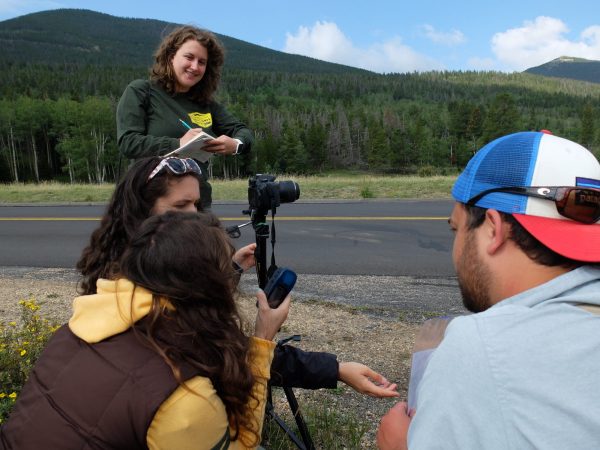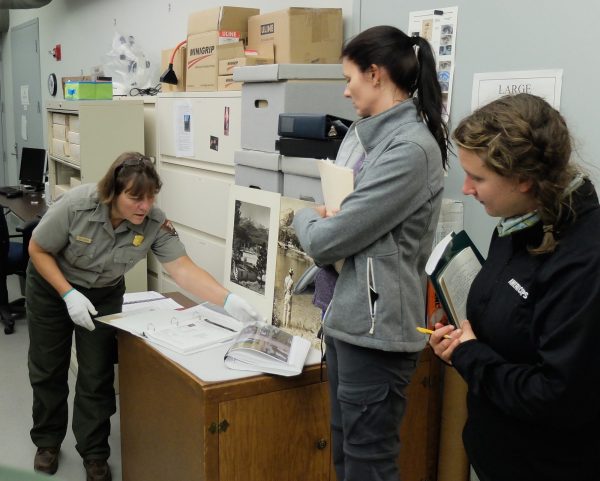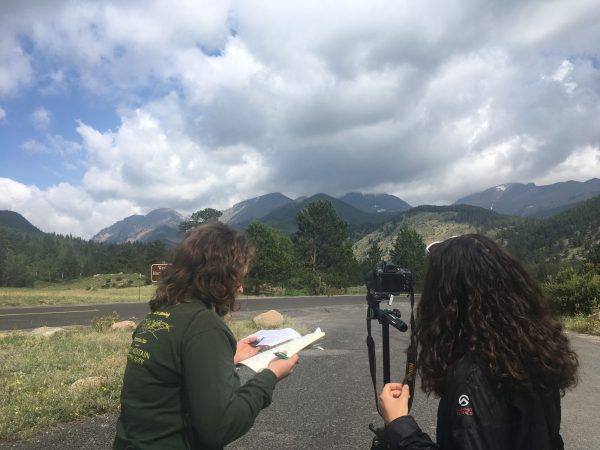 Students, faculty, and alumni took part in Parks as Portals to Learning (PPL), 2017. This is a one-week intensive summer institute held in Rocky Mountain National Park. Students from the colleges of Liberal Arts and Natural Resources live in the park and interact daily with park personnel and PLHC faculty. They learn about park environmental history, NPS adaptive management practices, and current management challenges. The students research park resource challenges, develop management briefs, and present recommendations to park staff. PPL was developed by CSU’s Public Lands History Center in conjunction with the Chief of Resource Stewardship at Rocky Mountain National Park to bring students, faculty, and NPS staff together to solve real-world problems.
Students, faculty, and alumni took part in Parks as Portals to Learning (PPL), 2017. This is a one-week intensive summer institute held in Rocky Mountain National Park. Students from the colleges of Liberal Arts and Natural Resources live in the park and interact daily with park personnel and PLHC faculty. They learn about park environmental history, NPS adaptive management practices, and current management challenges. The students research park resource challenges, develop management briefs, and present recommendations to park staff. PPL was developed by CSU’s Public Lands History Center in conjunction with the Chief of Resource Stewardship at Rocky Mountain National Park to bring students, faculty, and NPS staff together to solve real-world problems.
This year’s PPL participants used a method called “rerepeat photography” to help inform and shape natural and cultural resource management in the park. The students conducted fieldwork in the Horseshoe Park area of Rocky Mountain National Park and in the park’s archives. As the work in the field began, the PPL group organically came into their own roles within the project. The collective, non-hierarchical approach allowed each crew member to have their own say in how the field work would be conducted and what the end result would be.
The PPL participants brought a diverse set of skills and experience to the project. Second-year history graduate students, Hannah Ashley, Liz Henke, Kathrine Oldberg, and Patrick Hoehne, brought the methods they had learned at CSU. One incoming history graduate student, Dillon Maxwell, and a recent alumna, Kimberly Disney, brought fresh eyes to the project. Faculty and staff from the PLHC guided student research and included Dr. Brenda Todd, Dr. Jared Orsi, Dr. Sarah Payne, Dr. Ruth Alexander. They were joined by Dr. Emily Moore from the CSU Art Department, Dr. Mark Fiege from Montana State University, and Dr. Adrian Howkins from Bristol University, UK. Kayla Steele, a social studies teacher from Berthod High School joined the group along with as well as various Park Rangers, Park Staff, and Park Resource Managers.
The week gave all the participants a chance to fully immerse themselves into a historically rich part of Rocky Mountain National Park and view it from different perspectives, ranging from that of natural resource managers to educational professionals to daily visitors. The end result was an interactive story map revealing photos, findings, and potential future applications. This tool can help park managers understand what happened in the past in hopes to shape resource management Rocky Mountain National Park for the future.
-Contributed by Dillon Maxwell and Brenda Todd at the Public Lands History Center.

